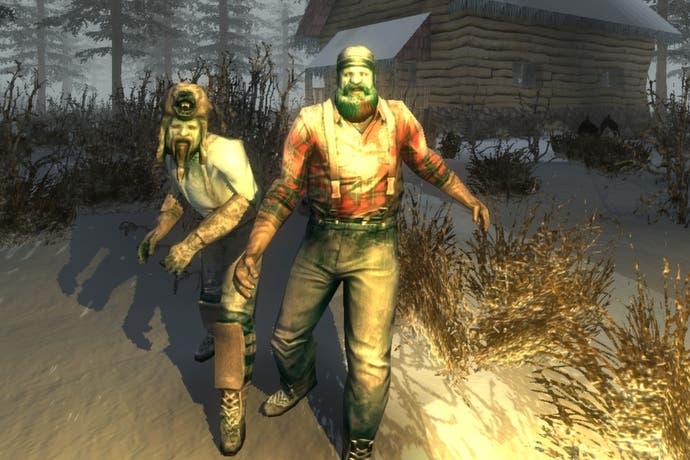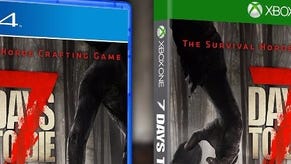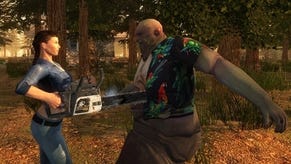7 Days to Die alpha review
Night of the living deadline.
Have you heard about the hot new trend that's sweeping gaming? It's not shooting, or punching, or even jumping. It's rummaging. That's the buzzword of 2014, the year when seemingly every other new game - on the PC in particular - requires you to dig around in cupboards, bin bags and broken fridges like a crazed old lady at a Mad Max jumble sale. Tins of meat! Clean water! Bits of old wood! These are the currencies of the new gaming age, not the shiny gold coins of yore.
7 Days to Die joins DayZ, Rust, Project Zomboid and others as another post-apocalyptic survival game in which you must endure a zombie plague by scavenging ammo and food, while fortifying safe havens against nocturnal onslaughts. While a relatively new formula, the clichés are already well established, and 7 Days to Die's early-access alpha seems to be walking right into all of them.
You spawn at random on a reasonably sized map. Unlike similar apocalyptic sandbox games, the map is a fixed thing - not procedurally generated - so you're able to get your bearings over time and work out the best places to head to for supplies. These, however, are randomised, so while one new game might start you in an area rich with guns and ammo, just waiting to be liberated from their mouldering sports bags and conveniently unlocked safes, the next new game might find you scrambling to find even a decent pistol before night falls.
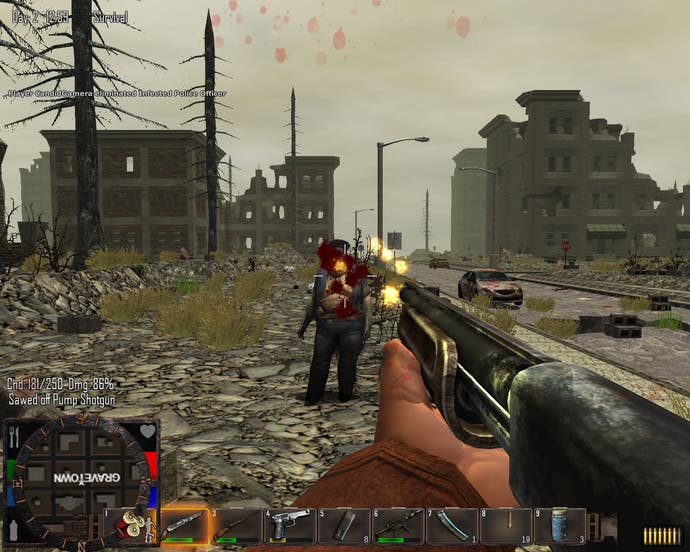
That's not terribly likely, however, as 7 Days to Die currently seems to be a very generous game. The odds are more likely that you'll find yourself spoiled for choice, with at least two of every weapon type fighting for inventory space, plus food to spare. You can, at least, tweak the settings before creating a new game, so once you've found your feet you'll want to do this in order to get the right level of challenge.
Combat is basic but efficient. You can punch zombies to death if you don't have a weapon - it takes about three hits to the face on the easiest difficulty, considerably more if you crank it up - or you can take aim with the game's rudimentary first-person shooter mechanics. The right mouse button switches you to iron sight aiming, and from there headshots are a doddle, regardless of difficulty.
These tactics will keep you alive during the daytime, but it's at night that the zombies become a lethal threat rather than a minor nuisance. In darkness, they switch from shuffling drones to speedy predators, and will begin to purposefully hunt you down. It's around this point that you'll wish you'd made more of an effort to find a safe spot. A room with a door is an obvious start, but the undead can break through those - and can even cause ceilings to collapse if enough of them get above you.
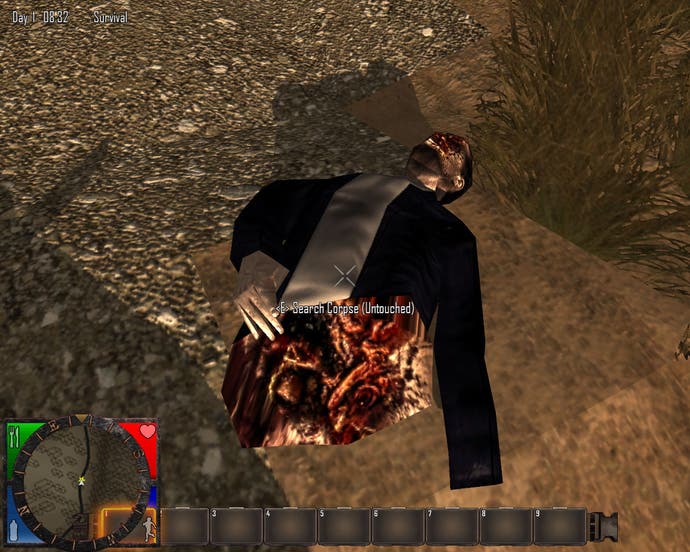
It's during the frantic, terrifying hours of darkness that you catch a glimpse of the game 7 Days to Die is hoping to become. Unfortunately, that's basically the game that most of its rivals already are, and some seriously creaky production values don't do much to suggest 7 Days will be joining their ranks.
This is a game that looks unfinished even by the standards of other unfinished games currently offering paid early access. Floor textures overlap as jagged square tiles. Shadows jerk across the landscape in chunks, while objects and scenery pop in and out of view constantly. The landscape is made up of Minecraft-esque voxel blocks which sit awkwardly alongside the supposedly more realistic buildings and cars. Mind you, all the 3D objects have a weird warped appearance too, as if being viewed in a funhouse mirror. The numerous cardboard boxes have an Escher quality, and seem to distort the objects and surfaces they touch.
It's not that the game looks unpolished - that's to be expected in an alpha build - but that it feels thrown together, made up of generic models and textures slapped into place to fill up the acres of map. It looks, quite frankly, like a first-year student project, not a commercial product headed for a final retail release.
"There's a line between indie and amateur, and on current evidence 7 Days to Die lands on the wrong side of it"

There's a line between indie and amateur, and on current evidence 7 Days to Die lands on the wrong side of it. More worrying, the loading screen boasts that future updates will bring new biomes, more locations, larger maps, forging, stealth abilities and more multiplayer modes. It would be more reassuring to hear that the developer is focusing on tidying up what's already in place rather than simply piling more stuff on top of it. It feels reckless rather than ambitious.
That's not to say that 7 Days to Die doesn't entertain in its own ramshackle way. You can open up your map to other players, which results in some fun friend-or-foe encounters, and there's a decent co-op siege mode for those who want a more immediate challenge. Once you get into the crafting side of things, it's possible to make some clever traps with which to hold the zombies at bay, and if you can gather together a group of collaborative friends, the task of building and maintaining a fortress is fairly compelling. And, of course, at a pure and primal level, it's always fun to unload a shotgun in a zombie's face.
Yet that is ultimately the game's biggest problem. Whenever you put guns, zombies and other players into the same pot, a certain base level of fun comes with the territory. 7 Days to Die takes a proven and popular concept that is almost guaranteed to amuse even when executed haphazardly, yet what the alpha access doesn't show is how it's going to take these elements and turn them into something distinct from the many, many games already ploughing similar soil. Even if a game development fairy could sprinkle the game with pixie dust overnight, tighten up the mechanics, polish the visuals and sort out the rather ugly UI where the minimap overlaps the inventory slots, you sense that it would still be riding on DayZ's fetid coat tails.
Eurogamer's alpha and beta reviews are reviews of games that are still in development but are already being offered for sale or funded by micro-transactions. They offer a preliminary verdict but have no score attached. For more information, read our editor's blog.
